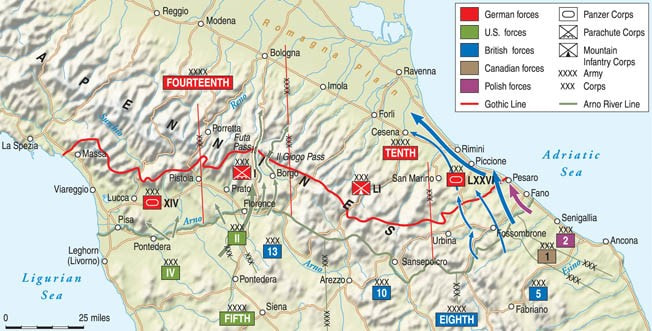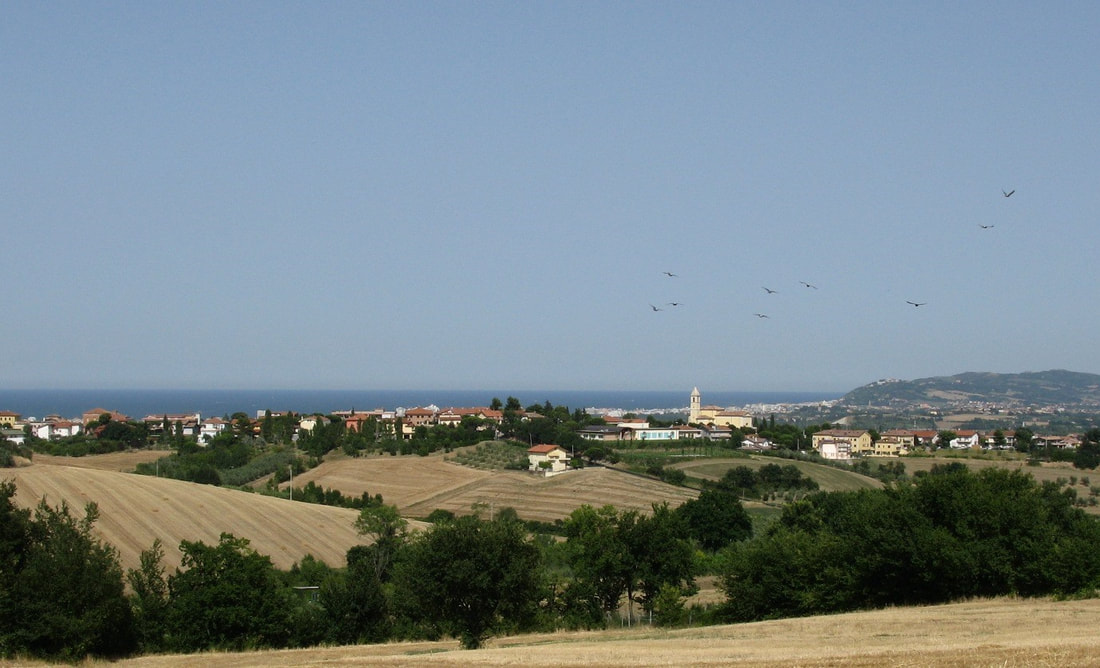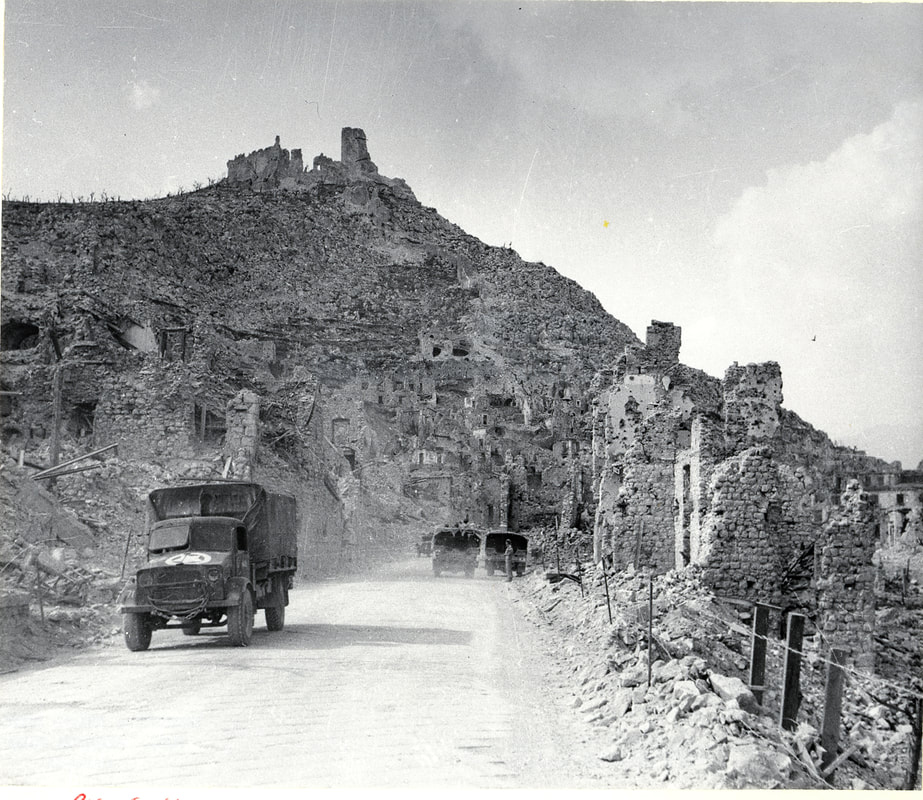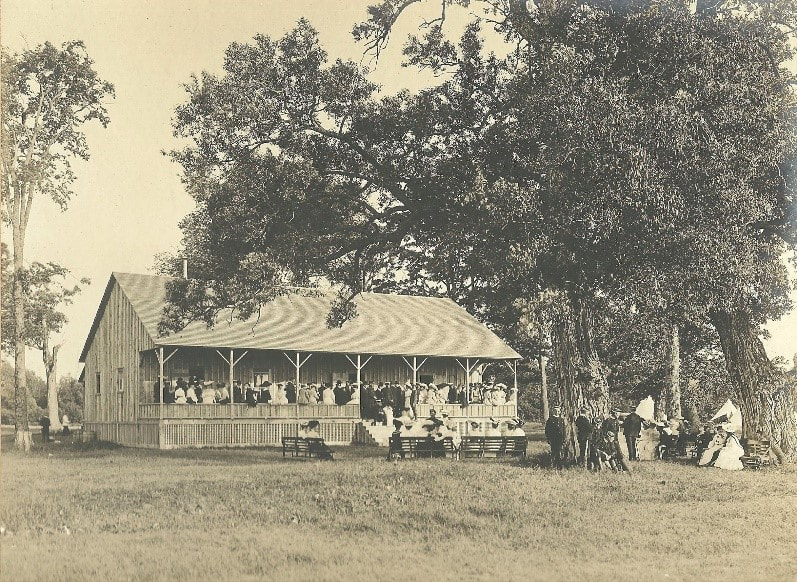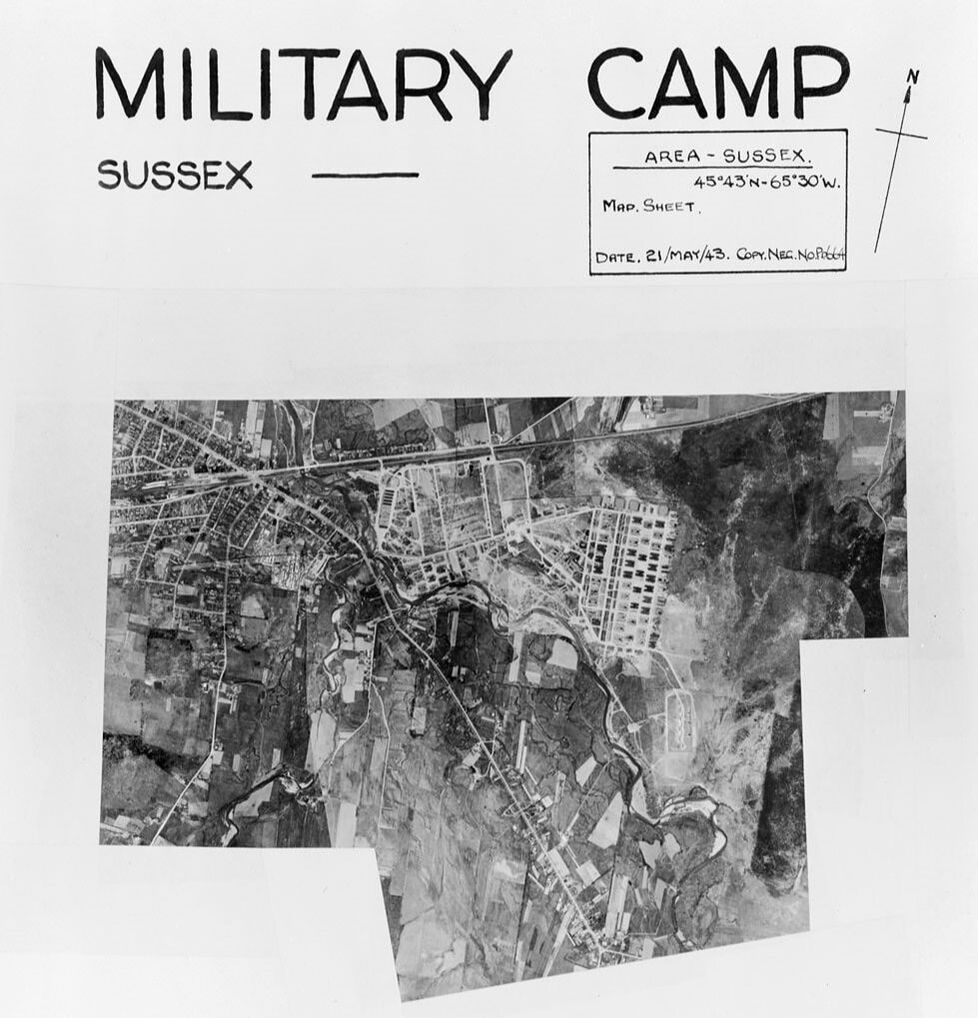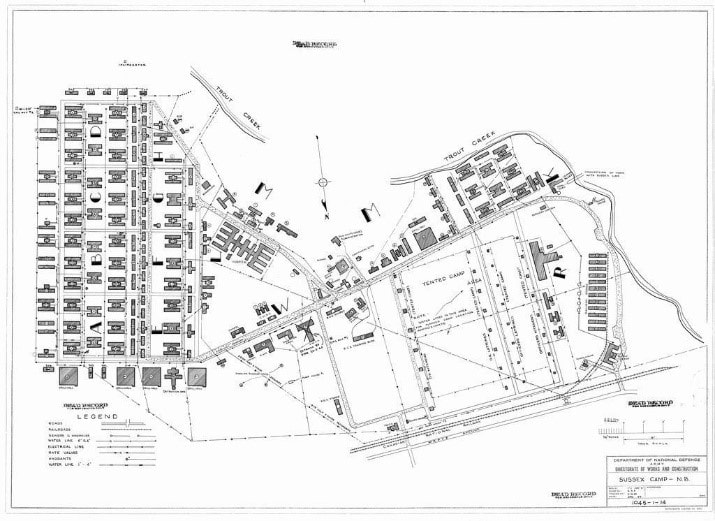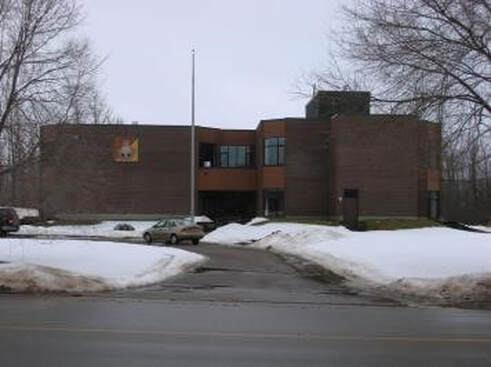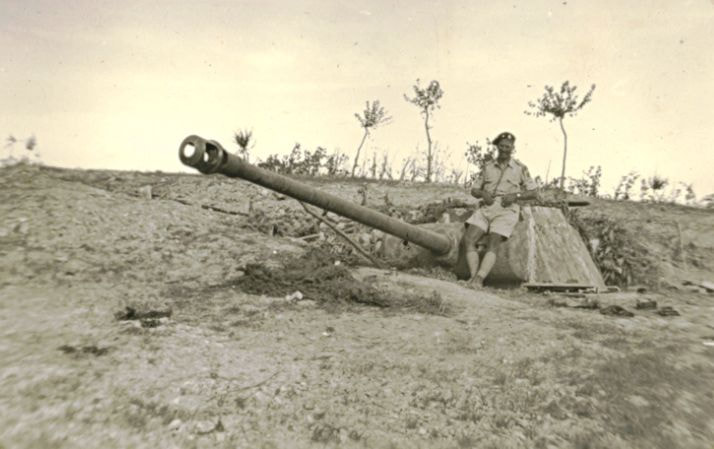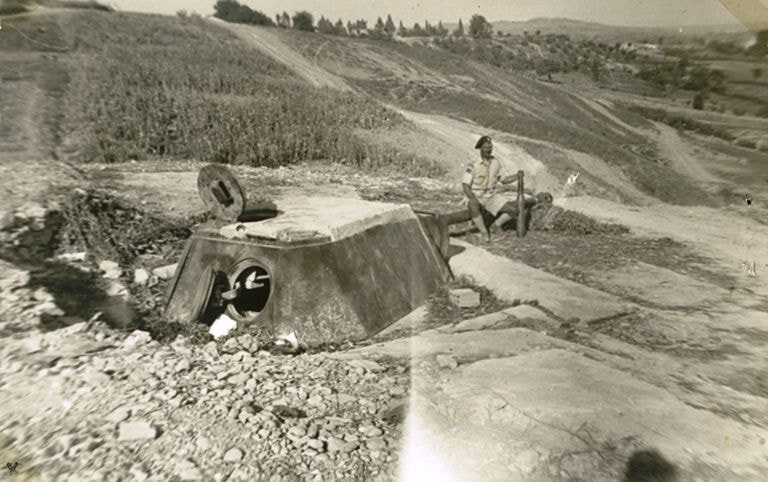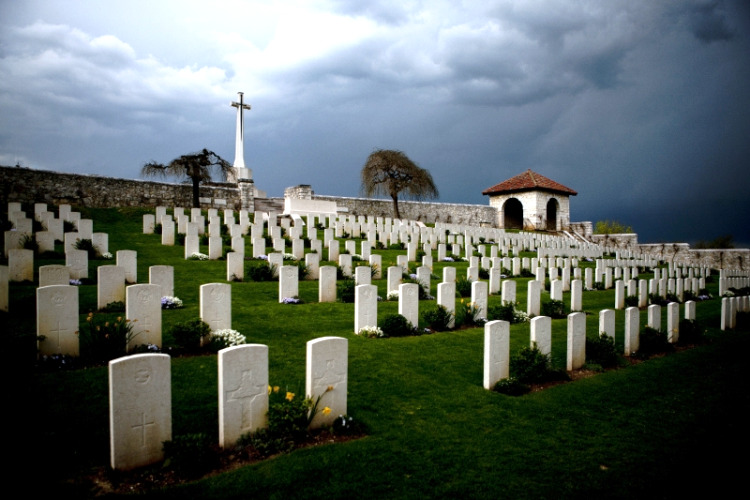The first action they saw on the Gothic Line was the battle at Montecchio, in which the Cape Breton Highlanders attacked three times before withdrawing. Eventually, the Hussars came to their assistance, and they captured the village, taking 130 prisoners. At the same time, A Squadron defended Point 111 a short distance away. The villages of Monte Luro, Monte Marrone, and Tomba di Pesaro fell shortly afterwards to the advancing Canadians. On September 3rd, 1944, the Canadian forces arrived at Misano, a small village perched atop a ridge, and one of many anchors of the Gothic Line. The Royal Canadian Regiment and the Westminster Regiment led the charge, with the 8th Hussars providing armoured support to the infantry units.
The 8th Hussars lost six tanks that day, but one Hussar received the Regiment's first Distinguished Conduct Medal during the battle. Sgt. W. P. Fleck dismounted his tank when daylight was running out and making it hard for crew commanders to see anything. Fleck led his tanks to their objective, killing five Germans with a machine-carbine and capturing eight more. He was wounded by shrapnel, but continued on with his injury until he passed out from loss of blood.
For the next ten days, the Canadians fought for every scrap of land they could hold. The center of that struggle, a simple, idyllic hilltop village, was to be the sight of one of the most destructive and hard-fought battles in the 8th Hussars' entire career as a regiment. In the end, Misano was a warm-up, paling in comparison to the utter, indiscriminate destruction of Coriano Ridge.
